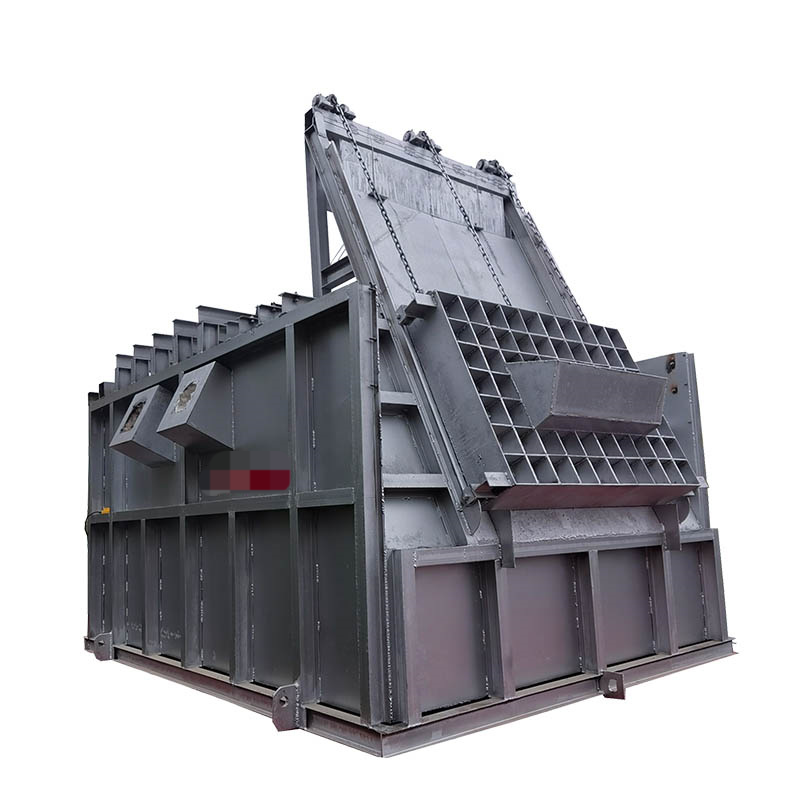The rectangular aluminum melting furnace is an indispensable furnace in the aluminum smelting industry. It is mainly used to smelt aluminum ingots and aluminum slag. In order to improve the smelting efficiency of the aluminum melting furnace and extend the furnace life, it is necessary to make a good design at the beginning of construction and use high-quality refractory materials. Today, let's take a look at how to choose suitable refractory castables in the construction of rectangular aluminum melting furnaces.
There are many types of refractory materials. When choosing, you should choose according to the actual use of the kiln and the temperature of the use part. For a rectangular aluminum melting furnace, its overall structure mainly includes the furnace top, upper furnace wall, furnace door, furnace bottom, lower furnace wall, furnace door frame and surrounding burners and fire ports. Because their working environment and working temperature are different, there must be a certain difference in the selection of castables. In addition, because the aluminum solution is very active and permeable, you must be particularly careful when choosing the working layer castable to prevent the aluminum solution from entering the kiln and reduce the impurities in the aluminum solution.

Therefore, when choosing castables, you should pay attention to the castables of each part:
1. Furnace top position: The furnace top area mainly includes two parts, one is the furnace top insulation layer, and the other is the top working layer. Because the working layer is in direct contact with the flame, its temperature is very high, and the insulation layer plays a role in protection and preventing heat from dissipating quickly. Therefore, when choosing castables, heavy castables are used for the furnace top working layer, and light insulation castables are used for the furnace top insulation layer.
2. Upper furnace body: The upper furnace body includes the upper furnace wall working layer and the upper furnace wall insulation layer. Like the furnace roof working layer, heavy castables are used as the working layer and light insulation castables are used as the insulation layer when selecting castables;
3. Furnace bottom and lower furnace wall: The furnace bottom and lower furnace wall must be in contact with both flames and liquid aluminum. Therefore, when selecting castables, non-stick aluminum castables, anti-seepage castables, and light insulation castables are mainly used. They are used as the furnace bottom working layer, furnace bottom anti-seepage layer, and furnace bottom insulation layer respectively;
4. Furnace door: Since the furnace door is the place where raw materials enter and exit, there will be friction. In order to prevent the furnace door from being damaged by long-term friction, light insulation castables and high-strength wear-resistant castables should also be selected.
5. Furnace door and furnace body: In order to improve the structural strength of the furnace door, a steel fiber self-flowing type with high strength and wear resistance is selected;
6. Burner and fire mouth position: A heat storage rectangular furnace refers to a furnace with burners on the opposite sides of the furnace wall, and the burners in the diagonal direction are opened regularly to achieve a better heating effect. When selecting castables, self-flowing high-temperature and high-strength wear-resistant castables should also be selected, because the temperatures at the burner and the furnace mouth are very high, and these two places are also where raw materials often enter and exit.
Above, the selection of various parts of the rectangular aluminum melting furnace is introduced. It can be seen that when selecting refractory castables, not only the characteristics of the medium should be considered, but also the role of each component should be taken into account. Only by selecting suitable refractory castables can the built aluminum melting furnace be able to withstand high temperatures and stable operation under high temperatures, so refractory materials are very important for aluminum melting furnaces.